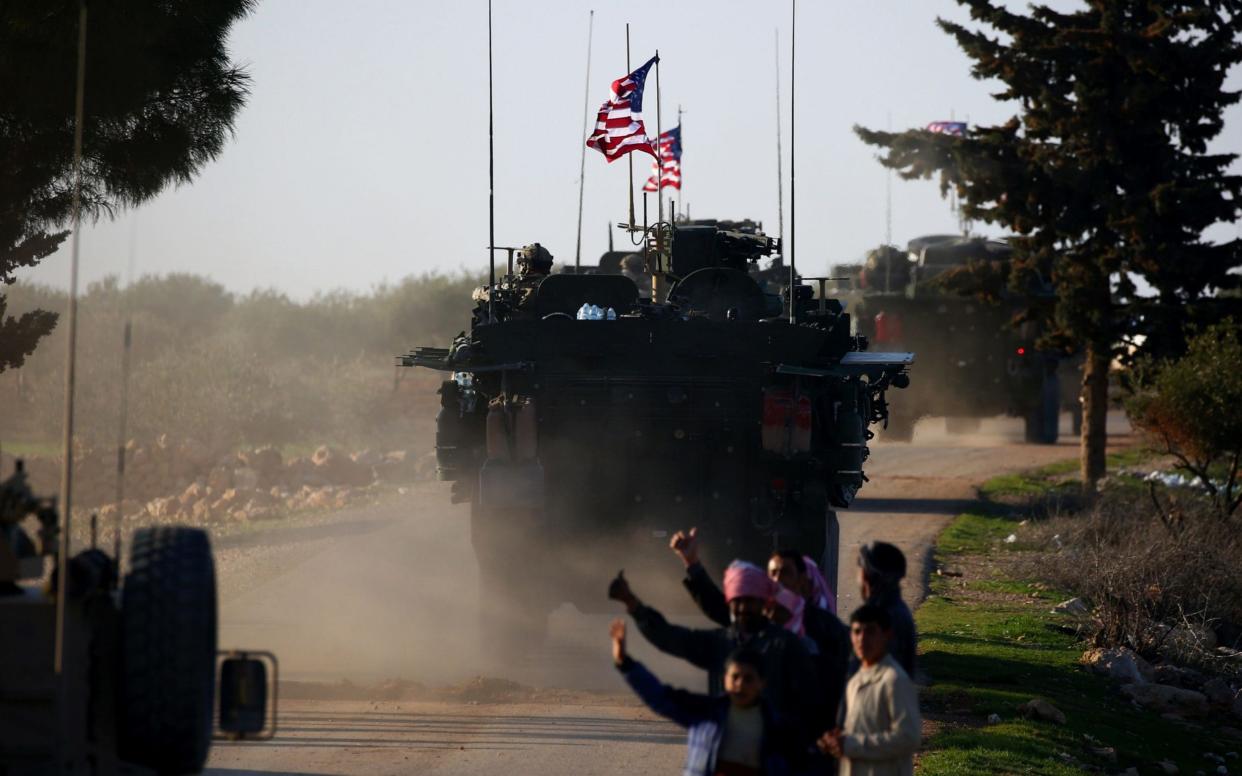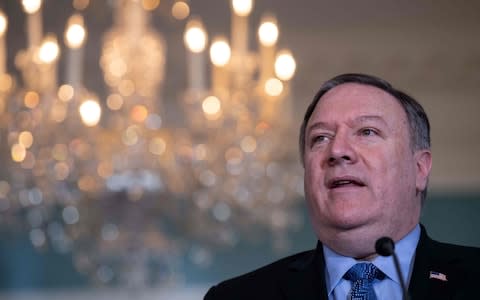US withdrawal from Syria begins after contradictory messages from John Bolton and Mike Pompeo

US troops have begun withdrawing from Syria, compounding weeks of confusion over Donald Trump’s policy in the Middle East and raising fears over the fate of America’s Kurdish allies.
The US-led coalition against the Islamic State of Iraq and the Levant (Isil) confirmed on Friday that the military had started the “deliberate withdrawal” of the roughly 2,000 American troops in Syria.
The military would not give any detail of the overall timetable for the American withdrawal nor which positions US troops had begun pulling back from.
A convoy of ten US military vehicles was seen leaving a base in Hasakah province in northeast Syria and heading towards the Iraqi border, according to the Syrian Observatory for Human Rights.
Mr Trump abruptly announced the US withdrawal from Syria on December 19, blindsiding US allies and triggering a confrontation within the US administration that led to the resignation of his defence secretary.
Over recent weeks, senior US officials have offered confusing and contradictory accounts of the terms and speed with which the US is leaving.
Mr Trump initially signalled a rapid withdrawal from Syria and US officials said they expected troops to be out with 30 days.
That timeline was then extended to several months in the face of a revolt by national security officials and Mr Trump’s own Republican allies.
John Bolton, Mr Trump’s national security advisor, then said on Sunday that the US would not leave until it had assurances that Turkey would not assault the Syrian Democratic Forces (SDF), the Kurdish-led group which provided the ground troops to fight Isil.
Mr Bolton’s comments invoked a furious response from Recep Tayyip Erdogan, Turkey’s president, who accused him of making “a grave mistake” by setting conditions for Turkey.
Turkey has threatened to move ahead with the assault against the SDF, who it considers part of a Kurdish terrorist group, regardless of whether the US slows its withdrawal.
Mike Pompeo, the US secretary of state, has spent the week in the Middle East trying to reassure US allies in the wake of Mr Trump’s announcement.
He said the US withdrawal would not be effected by Mr Erdogan’s threats against the Kurds but at the same time said the US would work to ensure the Kurds’ safety.

“These have been folks that have fought with us and it’s important that we do everything we can to ensure that those folks that fought with us are protected,” he said.
“Erdogan has made commitments; he understands that – I think he uses the language – he talks about (how) he has no beef with the Kurds.”
Russia said Friday that the US withdrawal underscored the need for the Kurds to reconcile with the Syrian regime. Kurdish leaders have seen a deal with Damascus as one possible way of staving off a Turkish attack.
The USS Kearsage, an amphibious assault ship, is moving into the region with hundreds of US Marines and helicopters to help cover the American withdrawal, according to the Wall Street Journal.
It does not appear at this point that the US military has been given a final date for full withdrawal from Syria and the timeline seems to be part of a broader debate about American strategy in the Middle East.
"CJTF-OIR has begun the process of our deliberate withdrawal from Syria," said a spokesman for the US-led coalition against Isil. "Out of concern for operational security, we will not discuss specific timelines, locations or troops movements.”

